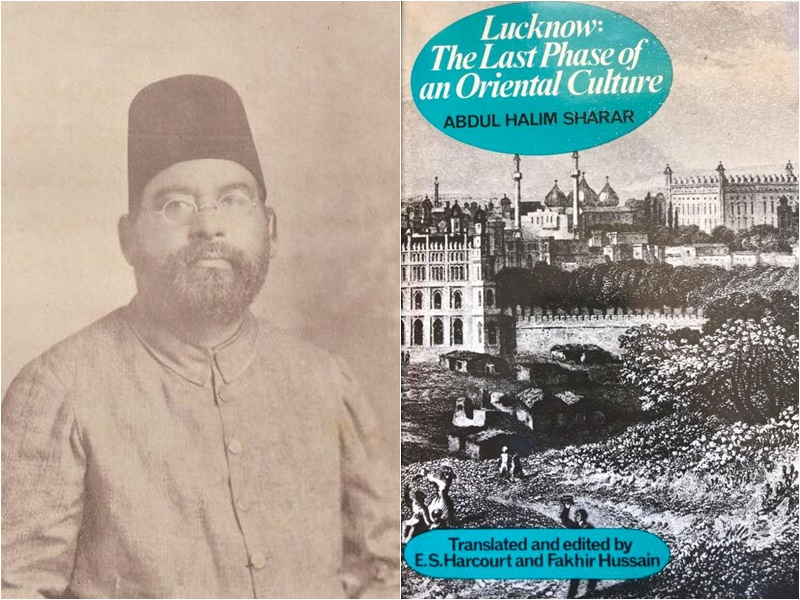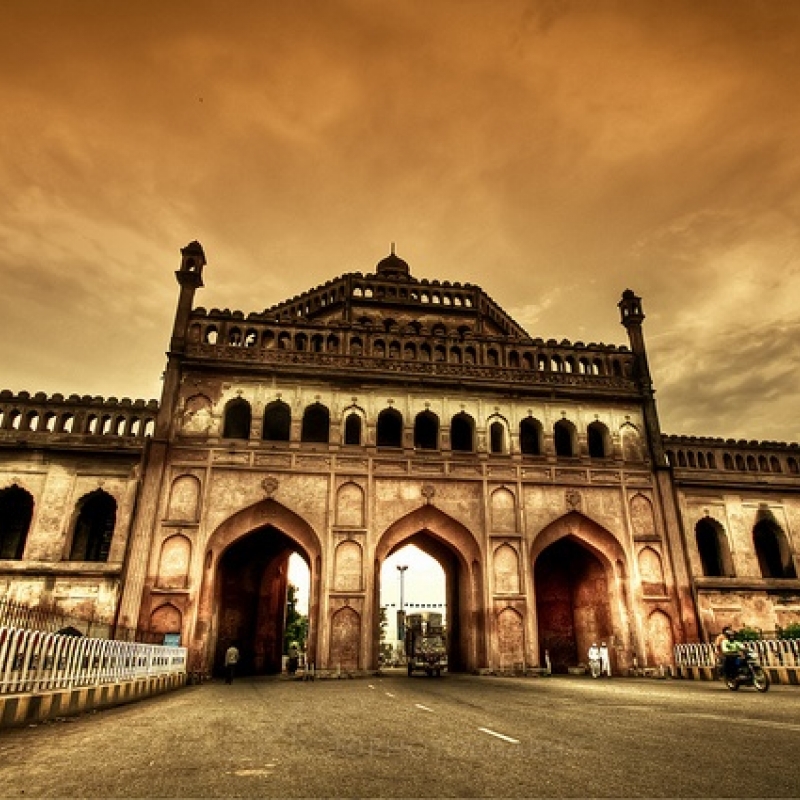What are today called 'B-towns' or Tier-2 cities have the potential to become culture-towns, if they don't lose their way building malls and flyovers. As part of the series ‘Reading a City’, we explore how Abdul Halim Sharar gave readers a sense of the culture of Lucknow, along with its short history, in the early 1900s. (Photo Courtesy: Wikimedia Commons)
The essays of Abdul Halim ‘Sharar’, published 100 years ago, gave readers a sense of the culture of Lucknow, along with its short history. They don't write like that anymore. For many people, his writings helped the spirit of guzishta (old) Lucknow to survive through Partition, and Mayawati-fication.
The poetry, the conversations, music and dance, fragrances—there was a whole culture to imbibe in Lucknow, but for most people today there is only chikan and kakori kebabs.
Lost in Translation
Translated as Lucknow: The Last Phase of an Oriental Culture by Fakhir Hussain and E.S. Harcourt (in 1975 and then reprinted in 1989), from the Urdu Guzishta Lucknow, the modification of Sharar’s title in translation was itself a concession to ‘orientalism’.
Much is lost irreparably when the original present tense is translated as past tense. Lucknow's culture, creativity, cultivated language and civility are never conveyed in textbooks, and children will never know what went on in the beautiful buildings now presented to them as ‘monuments’, hollowed-out inside.
Also read | How Cities have been Interpreted over Time
How do they make sense of cities less than 300-years old, but which have changed irrevocably? What will the lovely line ‘Subah-e-Banaras, Sham-e-Awadh, Shab-e-Malwa (Dawn in Benaras, twilight in Awadh/Lucknow, night in Malwa/Bhopal)’ mean to them? Will they realise that Awadh translates as Lucknow and Malwa as Bhopal? At dusk, will the visitor hear the magic of the notes of music and tinkle of anklets that a Bengali visitor, a contemporary of Sharar, recorded in his diary? All now drowned out in the cacophony of car horns and police sirens.
A whole culture—of poetry and calligraphy, music, sports, cuisine, fashions in costumes, festivals and processions—is described in leisurely fashion by Abdul Halim. His remarks on whether these skills have been honed over time or have lost their vitality show a fine sense of history. There is obvious distress at the way the British caricature arts and ceremonies, which they do not try to understand. Two chapters in his book on the art of making paan and serving it might appear excessive, but think of the detail attached to the Japanese tea ceremony.

Culture Towns and Smaller Havens
Lucknow-lore enjoyed a renaissance from the 1970s. Premchand’s Shatranj ke Khiladi (The Chess Players), transformed into Satyajit Ray’s film, recreated the gentle atmosphere of the city in 1856, its people free of any premonition of what was to come.
Also see | Badla Embroiderers of Lucknow
It took historians such as Veena Oldenburg to rescue the courtesans of Lucknow from obscurity; Rosie Llewellyn-Jones to bring alive an earlier cosmopolis of Frenchmen, the Nawab and the taluqdars (landed gentry), poets and musicians; Michael Fisher and John Pemble to untangle the connections between the Nawabs and the East India Company; and the Alkazi Collection to publish the spectacular photographs of the City of Illusion [1] (2006).
The Revolt of 1857–58 was most protracted in Lucknow. But that did not snuff out its court culture, as it happened in Delhi. Because by then, a little twin was being nurtured in the unlikely environment of British Calcutta.
Matia Burj was the Bengal suburb to which Nawab Wajid Ali Shah and his family moved to after the East India Company annexed his kingdom in 1856. From here, Shah planned to send representatives to petition Queen Victoria for the return of his kingdom. This was put paid to by the accident of the Revolt. Sharar describes the fantasy-city that the Nawab created in Matia Burj, which declined after his death in 1887 (but we know from the research of Brinsley Samaroo that Lucknow’s Kathak and music travelled to a third home, in the West Indies, carried by the Matia Burj inhabitants who migrated from Diamond Harbour as indentured labourers).
Sharar lived in Matia Burj till he was 20. Like Syed Ahmad Khan earlier, he started his career as a journalist in his teens, as the Matia Mahal correspondent of Avadh Akhbar. He then moved to Lucknow, which he recognised from Matia Mahal, rather than the other way around. It was in middle-age that he wrote the articles that were published in Dil Gudaz, a literary journal, between 1910 and 1920. The Last Mushaira of Delhi, by a fellow writer Farhatullah Baig, also appeared first in the form of a print series, in 1927.
Related | Syed Ahmad Khan and ‘Remains of the Great’ Delhi
When political structures decay, culture flowers in smaller havens. Like the German Renaissance towns, the successor-states of the Mughal Empire left in their wake India's culture-towns—Hyderabad, Jaipur, Bhopal, Tonk, Rampur. There must have been similar sequels earlier, to empires like that of the Cholas and of Vijayanagara.
What are today called 'B-towns' or Tier-2 cities have the potential to become culture-towns, if they don't lose their way building malls and flyovers. SMART cities will be sterile places if their efficiency ignores the spaces and activities that nourish the mind and create camaraderie.
This article is the third of a nine-part series on Reading A City by Dr Narayani Gupta on The Print.
Notes
[1] Rosie Llewellyn-Jones ed., Lucknow: City of Illusion (New Delhi: The Alkazi Foundation for the Arts, 1956), accessed October 22, 2019, https://alkazifoundation.org/lucknow-city-of-illusion/.












